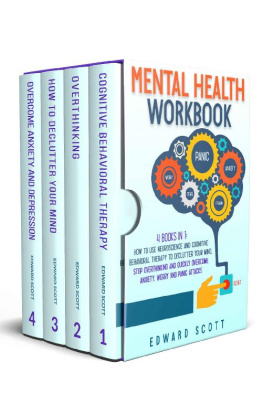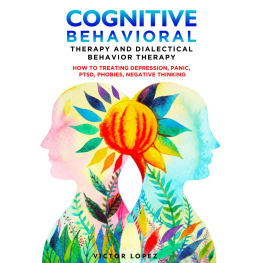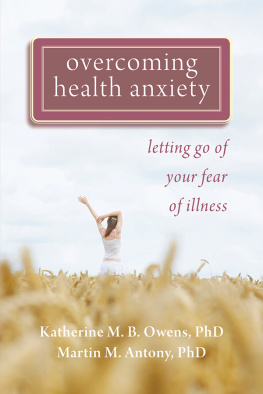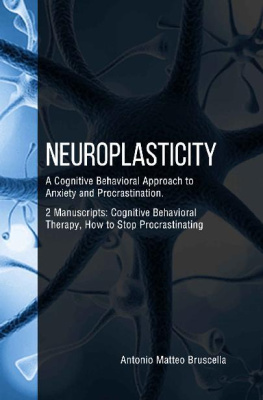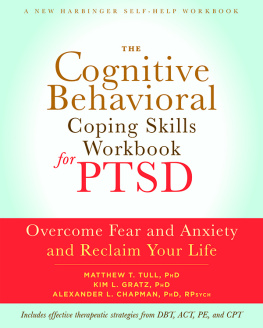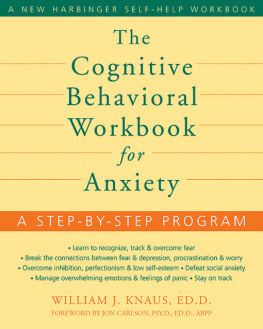Mental Health Workbook
4 Books In 1:
How to Use Neuroscience and Cognitive Behavioral Therapy to Declutter Your Mind, Stop Overthinking and Quickly Overcome Anxiety, Worry and Panic Attacks
EDWARD SCOTT
Copyright 2020 - All Rights Reserved
The content contained within this book may not be reproduced, duplicated or transmitted without direct written permission from the author or the publisher. Under no circumstances will any blame or legal responsibility be held against the publisher, or author, for any damages, reparation, or monetary loss due to the information contained within this book. Either directly or indirectly.
Legal Notice: This book is copyright protected. This book is only for personal use. You cannot amend, distribute, sell, use, quote or paraphrase any part, or the content within this book, without the consent of the author or publisher.
Disclaimer Notice: Please note the information contained within this document is for educational and entertainment purposes only. All effort has been executed to present accurate, up to date, and reliable, complete information. No warranties of any kind are declared or implied. Readers acknowledge that the author is not engaging in the rendering of legal, financial, medical or professional advice. The content within this book has been derived from various sources. Please consult a licensed professional before attempting any techniques outlined in this book.
By reading this document, the reader agrees that under no circumstances is the author responsible for any losses, direct or indirect, which are incurred as a result of the use of information contained within this document, including, but not limited to, errors, omissions, or inaccuracies.
Table Of Contents
Table Of Contents
Table Of Contents
Table Of Contents
PART I
COGNITIVE BEHAVIORAL THERAPY
Introduction
C ognitive Behavioral Therapy is one of the types of psychotherapy that helps you change your automatic thought patterns, cope with your emotions, and challenge your negative behaviors. Has anyone ever told you that your actions have consequences? Well, they do! The way we react can stop us from moving on our lives, and that is why it is so important.
The basic principles of Cognitive Behavioral Therapy, lies within its name: Cognitive = This is because the whole idea of CBT focuses on our ideas, beliefs, thoughts and generally how we feel.
Behavioral = You already know that behavior is something we do, or the way we act. Sometimes this can be driven by how we feel or our emotions.
Therapy = If we are in therapy, we are receiving treatment for something we have, are trying to work out, or fix it. The therapy eventually remedies the problem.
Think about an occasion when youve been reactionary. Maybe this is because someone takes something for you or treats you badly. We can be reactionary as our thoughts or behaviors are automatic, and as a result as we struggle to control our gut-reaction. This means we cant always help the way we feel or act, so we get emotional and behave without thinking. This is the way we are programmed to think or react in a negative way instantly.
These basic principles indicate how this therapy is focused on what you think and how you act in relation to an event or trauma. They are like a gut-reaction as we respond without thinking. Our thoughts and behaviors occur regularly, but what are automatic or intrusive thoughts and how can we change them?
Cognitive Behavioral Therapy is a well-known psychotherapy treatment that is notable for its positive results and feedbacks. It has helped thousands of individuals overcome different things and helps them regain control of their lives. It caters to different aspects of how a person responds to a certain situation or problem.
CBT is quite a complex and intricate method to understand. It is composed of several different aspects that should be understood before initiating the process. The three main parts of CBT are: thoughts, emotions and behaviors. These are all interconnected and can significantly impact one another.
Emotions are also crucial since this greatly indicates what and how a person might feel. Behavior deals with how a person interprets their thoughts and emotions and how they want to handle as well as express themselves in any particular situation. In this chain, behavior is mainly dependent on a persons thoughts and emotions. It deals with the cognitive aspect of a person as well as their behavior.
In terms of their train of thought, individuals will learn how to accept the current situation theyre in and, instead of choosing to think about the negative thoughts and emotions, they learn how to focus more on the positive aspects in life. They try to see the silver lining in each situation and try to shed light on favorable emotions.
As for the behavioral aspect of CBT, it alters the way that different individuals react to various scenarios. When faced with a problem or situation, CBT allows them to take control of how they might behave and respond to it and lets them be a better person.
CHAPTER 1:
What is Cognitive Behavioral Therapy?
C ognitive Behavioral Therapy was developed by a psychiatrist called Aaron Beck in the early 1960s. He came up with Cognitive Behavioral Therapy after noticing that his patients tend to talk to themselves as a way of expressing their internal problems. He also saw that the feelings of his patients impact their thoughts.
This system developed by Beck has been widely used in the treatment of a wide range of mental issues such as depression. Cognitive therapists use this system to help clients identify negative thought patterns that may cause them to be depressed.
The patients are also encouraged to challenge and question these erroneous thoughts. They are encouraged to seek alternative ways of thinking which are more productive and rewarding.
Aaron Beck believes that your reactions to negative thoughts contribute to irrational behaviors. You regularly deal with different situations in your life, some positive while others are negative. The negative situations thoughts can come back to haunt you later in life.
How Aaron Beck Came Up with CBT Model
While working as a clinical psychologist, Beck noticed a respite in the patient's symptoms, and he concluded that the patients were presented with negative recurring thoughts, some of which were activating or triggering mental disorders. He later termed these events as automatic negative thoughts.
Beck believed that when your thoughts are incredibly harmful, you end up depressed. These thoughts can persist even in the face of contradicting evidence.
CBT Models
Beck identified some models that explain what contributes to depression and other mental disorders in an individual. These models are:
The Cognitive Triad
Errors in logic
Negative self-schemas
1. The Cognitive Triad
Beck came up with what he called the cognitive triad while working with people suffering from depression. These are the three kinds of negative thinking that characterize depressed people. They are:
These thoughts tend to come automatically and suddenly to people suffering from depression. When these three thoughts interact, they cause you to be obsessed with negative thoughts. They interfere with your standard cognition processing leading you to have distorted perception and memory.
2. Errors in Logic/Cognitive Distortions
Next page
